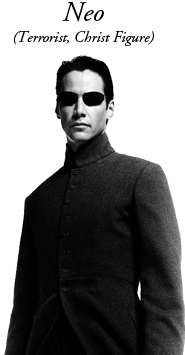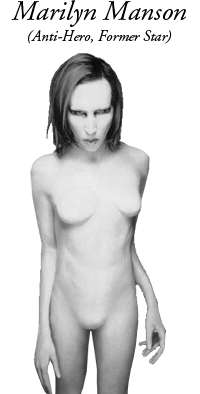It takes a trilogy of posts to defend a controversial series like The Matrix Trilogy. What follows is Part One.
As consumers of storytelling, we like conflict and we like that conflict to be set between two sides that are easy to distinguish — namely good and evil.
 Prior to Star Wars, science fiction was reliably set in dystopian visions of overly-ordered societies, often totalitarian and controlling. The hero was usually a wild anomaly in the system that by film’s end, had been resolved and reabsorbed or killed. Filmmakers were compelled to report our cultural temperature as it was, not as we might hope it to be, and between Nixon and Vietnam and desegregation and generational upheaval, it was hard to spot silver linings just then. Hope was naive by comparison.
Prior to Star Wars, science fiction was reliably set in dystopian visions of overly-ordered societies, often totalitarian and controlling. The hero was usually a wild anomaly in the system that by film’s end, had been resolved and reabsorbed or killed. Filmmakers were compelled to report our cultural temperature as it was, not as we might hope it to be, and between Nixon and Vietnam and desegregation and generational upheaval, it was hard to spot silver linings just then. Hope was naive by comparison.
This was our culture’s raw, inner-cynicism revealing itself as pathology and such a pathology that, without hope, would potentially evolve into self-fulfilling prophecy. Amidst that cynicism, Star Wars sought to reintroduce clearly-defined roles for us. It collectively reset our disposition to aspirations for “a new hope.”
Lines between good and evil were brought into very discernible clarity and fought between discernible sides for most of the 80s. John Rambo as he appeared in First Blood, holding the past-due bill for our horrific abandonment of the Vietnam veteran, was roundly ignored. It wasn’t until he was forced to fight against perceived evil again in Rambo: First Blood, Part II, that he became an American phenoma. In Reagan’s America, the culture prided itself on knowing that good guys always wore white and bad guys always wore red. Well, at least until the Iran-Contra hearings. Then everything started to go all wonky again.
Moral ambiguity wouldn’t really begin to make a return until the post-Soviet 90s, when anti-heroes returned and we recognized the most interesting people were those we could cheer both for and against.
Pulp Fiction put forth all manner of characters that you knew were, to some degree, complicit with bad deeds. Despite this, we empathized with them, often against another character we had just cheered for in a previous scene. Likewise, Seinfeld was arguably the most popular show of the 90s and its four leads were all really selfish, petty people. Kurt Cobain, poster boy of the 90s, rose to prominence and flamed out under a constant wet blanket of cynicism and mistrust.
By the end of the decade, evil was two high-school kids from Littleton, Colorado and a rock star misattributed to inspiring them. Osama bin Laden had even already once attacked the World Trade Center and not even he was the greatest threat to America, at least as far as pop culture was concerned. America was starting to see that its own fascination with the anti-hero was mixing poorly with its own taste for fantastic violence.
 It’s worth noting that Marilyn Manson wasn’t the sole witch put on trial for Columbine. The first Matrix film was dragged through the mire, as well. Why? The Matrix was a story that, while still focusing on rebellious anti-heroes, had at least justified them morally. While accepting moral ambiguity under the standard as defined by The Matrix, when you “freed your mind,” you could see that being anti-establishment was really fighting for liberty from enslavement. It recast moral ambiguity as moral imperative and justified it. Knowing that, it became a lot easier to start killing off wave after wave of policemen, because, you know … we wanna be free. To do what we wanna do. And… stuff.
It’s worth noting that Marilyn Manson wasn’t the sole witch put on trial for Columbine. The first Matrix film was dragged through the mire, as well. Why? The Matrix was a story that, while still focusing on rebellious anti-heroes, had at least justified them morally. While accepting moral ambiguity under the standard as defined by The Matrix, when you “freed your mind,” you could see that being anti-establishment was really fighting for liberty from enslavement. It recast moral ambiguity as moral imperative and justified it. Knowing that, it became a lot easier to start killing off wave after wave of policemen, because, you know … we wanna be free. To do what we wanna do. And… stuff.
Not only that, but in The Matrix there was A PROPHECY and it said in no uncertain terms that we were supposed to be doing this! It was a directive handed down by a smiling, warm, matronly woman of color, who was seemingly obsessed with eating candy! We had no idea if she was God or not, but there was a Buddhist child sitting in her living room bending spoons with his mind, so we might be okay assuming as much.
By the end, Neo (our surrogate in this hero’s journey, as portrayed by Keanu Reeves), is even able to defeat death! With love! COME ON … What gets more hopeful than that?! It’s moral ambiguity disambiguated, justified and given a heavy buttercream frosting of clearly defined, ol’ fashioned good-versus-evil. Slap on some cutting-edge special effects, some beautiful fight choreography, and underline the entire story with fairly intense allusions to philosophical precepts from Heidegger, Descartes, and Plato and by the time you’re finished, it’s practically fine-fuckin’-literature. It becomes the sort of cinematic force that encourages a culture to turn a corner, much like Star Wars had.
It was a huge hit, amidst and possibly in spite of the return of the first new Star Wars film in 16 or so odd years, showing on alternate screens in the same multiplexes. What a journey to this place in our culture … But don’t kick off those travelin’ shoes just yet …
The only thing to do after that was to make more of them. After all, no film worth its salt was truly justified until it was turned into a trilogy. “Woah — they’re making The Matrix into a trilogy? And they’re shooting the sequels at the same time? And they’ll come out within months of each other? HELL. YES.”
Oh, wait…
Four years passed between the first Matrix film and its two sequels. During that time America’s moral barometer had undergone one hell of a reconfiguring. George W. Bush was awarded his presidency by the Supreme Court, despite narrowly losing the popular vote. That Osama bin Laden guy turned up again, but this time he managed to capture our strict attention. In response, we started not one but two wars, with moral ambiguity a firm point of contention associated with the second one.
As the spring thaw began in 2003 and the hype machine for the first Matrix sequel (The Matrix Reloaded) sprung into action, soldiers and Iraqi citizens were pulling down Saddam Hussein’s statue in Baghdad. Good guys win! Good guys win! Mission accomplished!
Oh, wait…
By the movie’s release date in May, responsibility for rebuilding Iraq had started to become a sore spot. No-bid contracts for Vice President Dick Cheney’s former employer, Halliburton, were radically expanding. What were initially thought to be Iraqi Bathists, loyal to Saddam Hussein, were starting to attack our troops with improvised explosive devices. The dissent that had been culturally divisive in the run-up to our invasion of Iraq had been squashed under an avalanche of nationalism and the dissenters had settled into a funk of hopelessness. But there was a new Matrix film coming out, so at least there was a new, escapist, fantasy film to which we could look forward.
Instead, what eager movie fans found in the theaters that May was not quite picking up the story they’d left. First, in The Matrix Reloaded we learn that despite the liberation at the first film’s conclusion, the threat was greater now. The whole of Zion was about to be destroyed by machines mounting a final offensive, and it meant to wipe out all of civilization, less a mere handful who would perpetuate the illusion of choice and freedom.
 Where lines between good and evil had been clear, now there were musings about how very symbiotic humanity’s relationship with the machines remained. That matronly, sweet fairy godmother who loved candy? She was revealed to be another program from the machine world — could we even trust her now? Before, we knew with absolute certainty that Neo was the God-given savior of humanity, but by film’s end, moral clarity became moral ambiguity and was implying it was about to become moral relativism. Our MacGuffin had been pulled out from under us as the prophecy was exposed as a lie of further control, and we were left with only a mere hint there was ever any justification to it to begin with. Say, that sounds familiar …
Where lines between good and evil had been clear, now there were musings about how very symbiotic humanity’s relationship with the machines remained. That matronly, sweet fairy godmother who loved candy? She was revealed to be another program from the machine world — could we even trust her now? Before, we knew with absolute certainty that Neo was the God-given savior of humanity, but by film’s end, moral clarity became moral ambiguity and was implying it was about to become moral relativism. Our MacGuffin had been pulled out from under us as the prophecy was exposed as a lie of further control, and we were left with only a mere hint there was ever any justification to it to begin with. Say, that sounds familiar …
Well slap some philosophical musings about causality from a tormenting Frenchman who laughs at how gullible our heroes are, and you can imagine how let down the culture ultimately was, both in our own real world and in the world of the film. We started the film knowing everything and we ended the film knowing that everything we ever thought we knew was a lie, with only a plate of Freedom Fries to console us. Knowing the path was, indeed, proving to be very different from walking the path.
It takes a three-part series to defend the last two movies in this trilogy:
The entire series of ‘The Matrix’ Trilogy Defended from The Contrarian:
‘The Matrix’ Trilogy Defended Part One
‘The Matrix’ Trilogy Defended Part Two
‘The Matrix’ Trilogy Defended Part Three




{ 1 comment }
I really like Reloaded, maybe as much as the first film. It’s Revolutions that has the majority of issues, in my opinion.
Comments on this entry are closed.